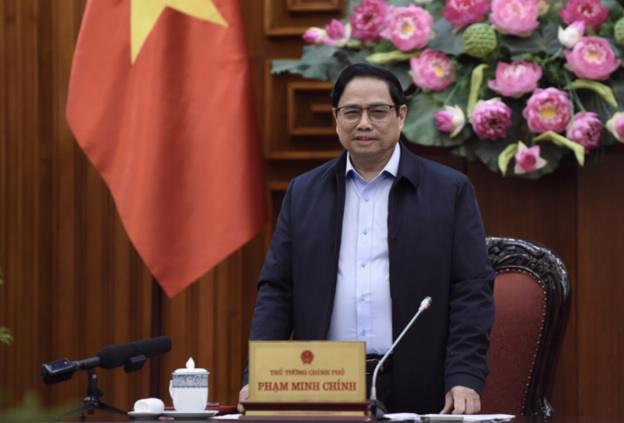Prime Minister Pham Minh Chinh has requested that the State Bank of Vietnam (SBV) flexibly and effectively manage monetary policy, ensuring liquidity and stability in the banking system and striking a balance between exchange rates and interest rates and between inflation control and growth promotion.
He made the request when chairing a government conference on fiscal, monetary, and macroeconomic policies on December 6.
The PM also asked the central bank to increase credit limits sensibly and effectively to facilitate the operations of enterprises and credit institutions, and to focus on the three areas of investment, exports, and consumption.
“The SBV must reinforce supervision and inspection to make sure that credit will go to the right targets and avoid corruption and profiteering,” Prime Minister Chinh said. “It is necessary to protect the legitimate rights and interests of the people, enterprises, and related parties in all circumstances.”
He assigned the central bank to amend Decree No. 31/2022 on interest rate support from the State budget for loans to enterprises, cooperatives, and business households, and to identify policies to support buyers of social housing and review property projects to timely support those that are eligible.
“Credit organizations must promote a spirit of sharing benefits and sharing risks,” he said, explaining that lenders grow only when people put their money into banks, so banks must share the difficulties with the people, enterprises, and the economy when needed.
He also asked the Ministry of Finance to study and propose reductions and extensions on the payment of taxes, fees, and charges by individuals and businesses.
“It is also necessary to develop a reasonable price policy for fields such as aviation, medicine, medical equipment, and petroleum, respect rules of competition and supply and demand, while maintaining State management to stabilize the market if necessary,” he said.
Regarding the labor market, he asked that the Ministry of Labor, Invalids, and Social Affairs thoroughly assess the labor market in order to prevent disruptions in labor supply chains.









 Google translate
Google translate